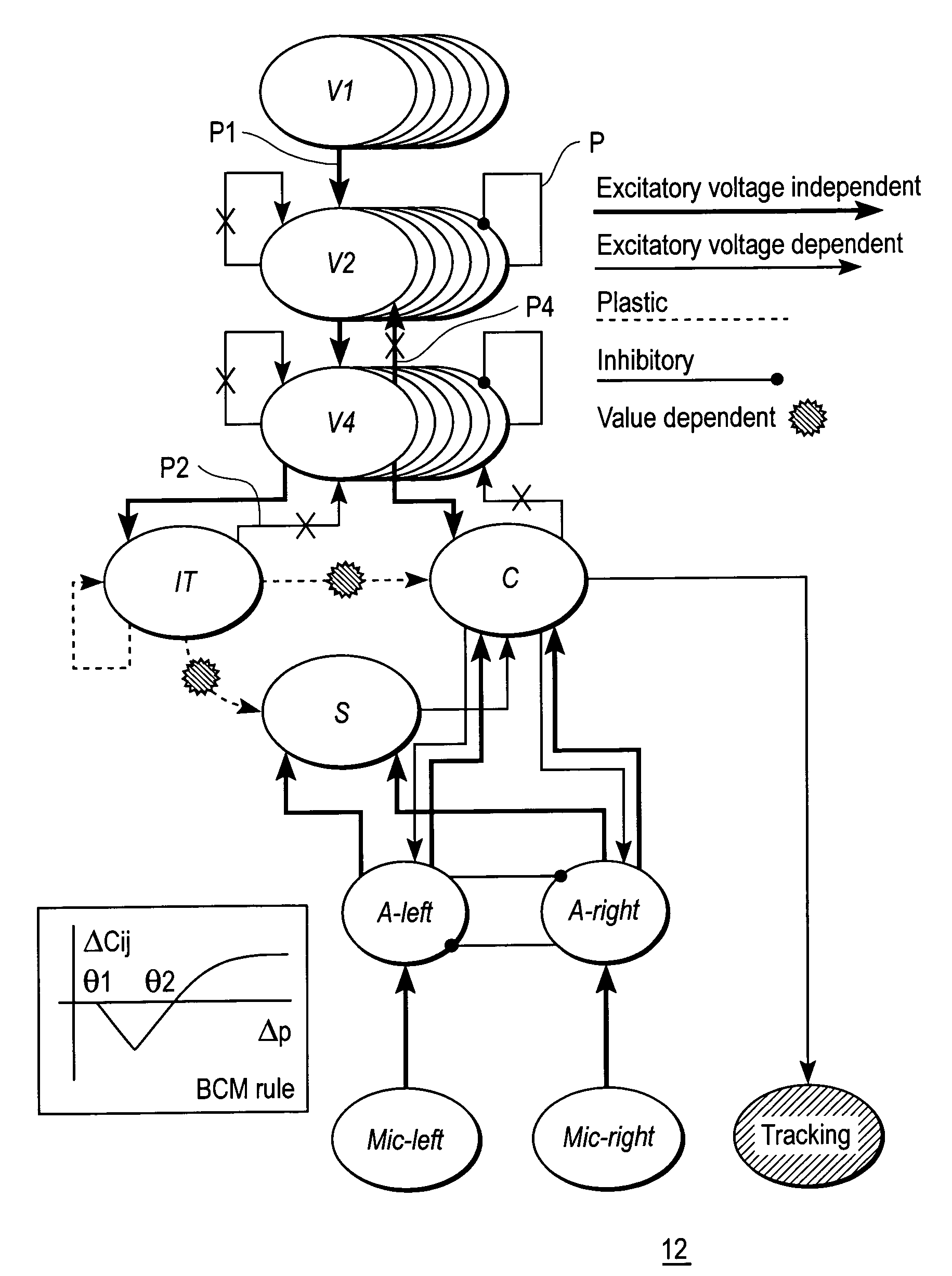Mobile brain-based device for use in a real world environment
- Summary
- Abstract
- Description
- Claims
- Application Information
AI Technical Summary
Benefits of technology
Problems solved by technology
Method used
Image
Examples
Embodiment Construction
[0032]Aspects of the invention are illustrated by way of example and not by way of limitation in the figures of the accompanying drawings in which like references indicate similar elements. It should be noted that references to “an”, “one” and “various” embodiments in this disclosure are not necessarily to the same embodiment, and such references mean at least one. In the following description, numerous specific details are set forth to provide a thorough description of the invention. However, it will be apparent to one skilled in the art that the invention may be practiced without these specific details. In other instances, well-known features have not been described in detail so as not to obscure the invention.
[0033]FIG. 1 is a pictorial view of a brain-based device (BBD) of the present invention which includes physically instantiated mobile Neurally Organized Mobile Adaptive Device (NOMAD) 10 which can explore its environment and develop adaptive behavior while experiencing it. T...
PUM
 Login to View More
Login to View More Abstract
Description
Claims
Application Information
 Login to View More
Login to View More - R&D
- Intellectual Property
- Life Sciences
- Materials
- Tech Scout
- Unparalleled Data Quality
- Higher Quality Content
- 60% Fewer Hallucinations
Browse by: Latest US Patents, China's latest patents, Technical Efficacy Thesaurus, Application Domain, Technology Topic, Popular Technical Reports.
© 2025 PatSnap. All rights reserved.Legal|Privacy policy|Modern Slavery Act Transparency Statement|Sitemap|About US| Contact US: help@patsnap.com



